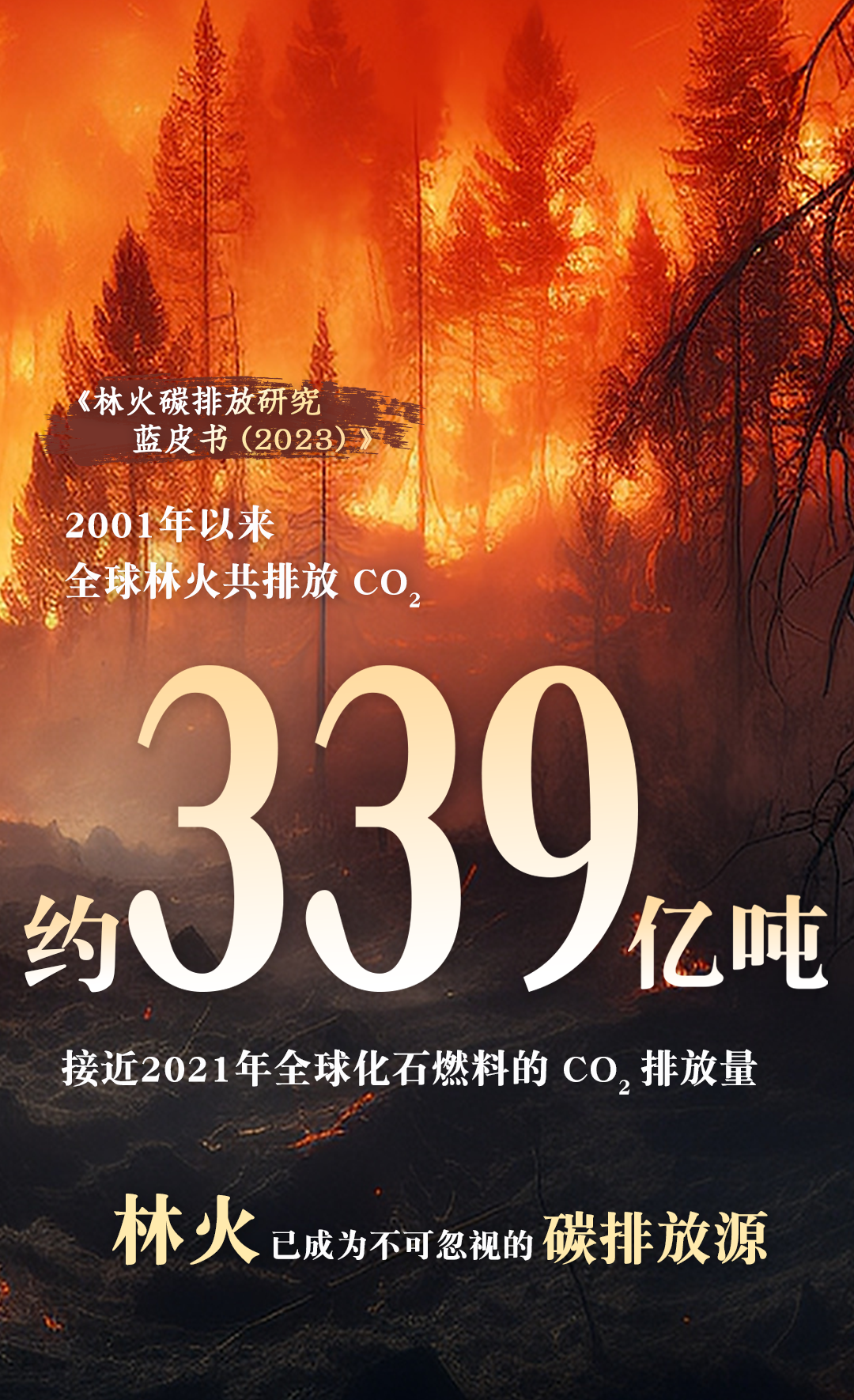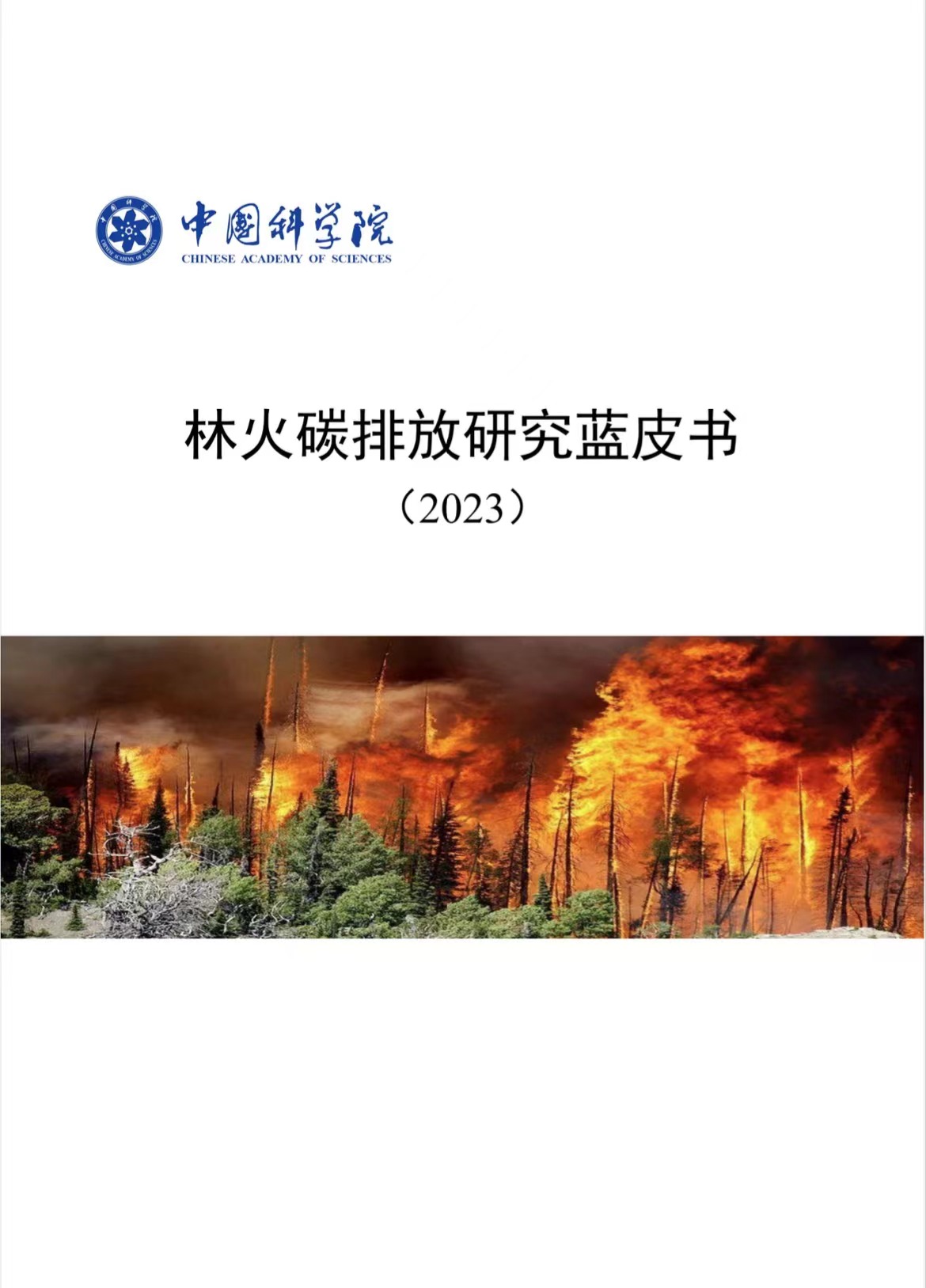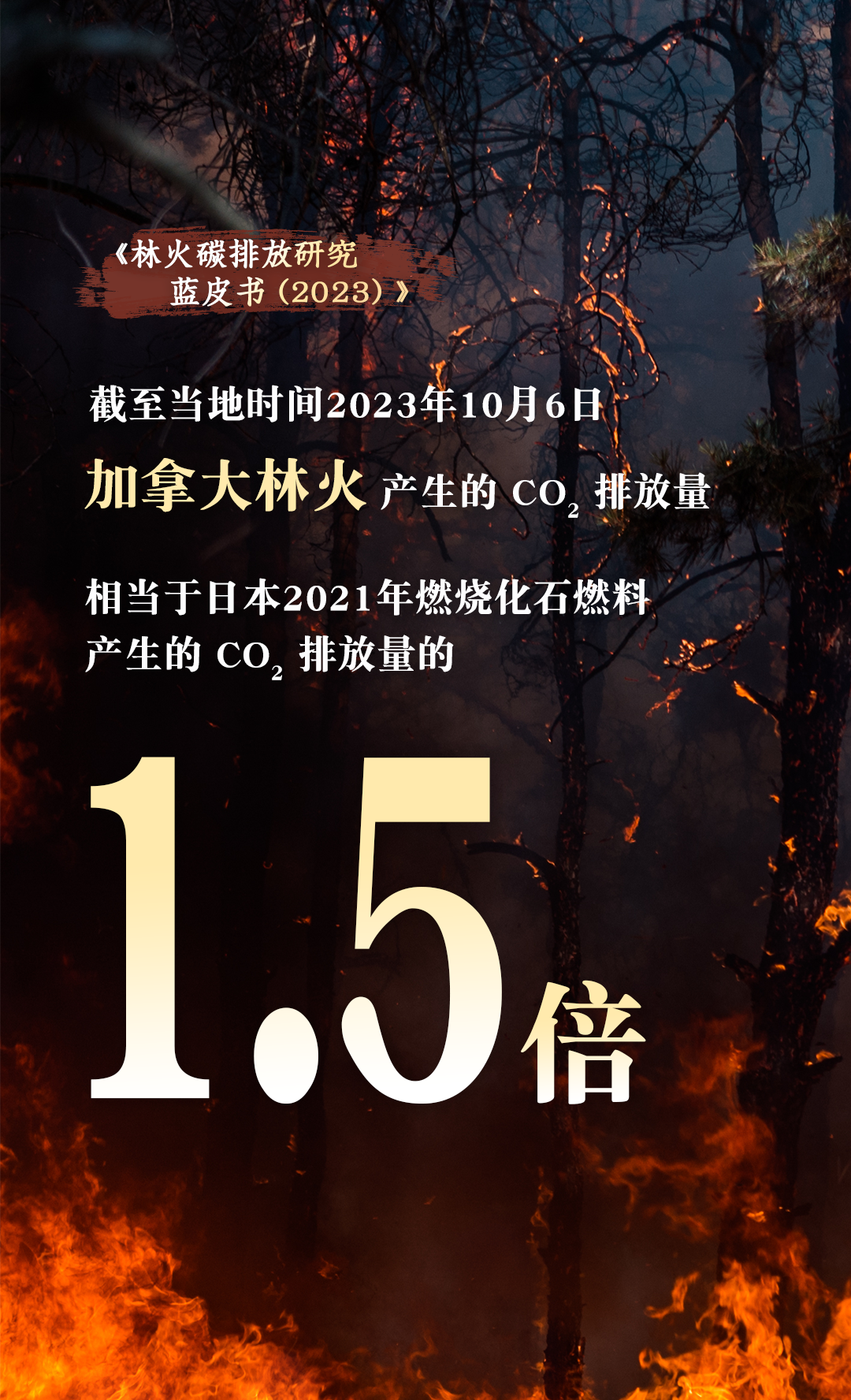The Chinese Academy of Sciences issued a blue book: it is recommended to include forest fires

On December 7, the Chinese Academy of Sciences released the Blue Book of Research on Carbon Emissions from Forest Fires (2023). Zhu Jiaojun, director of the Shenyang Institute of Applied Ecology of the Chinese Academy of Sciences and academician of the Chinese Academy of Engineering, said at the press conference that forest fires have become a source of carbon emissions that cannot be ignored, and it is recommended to be included in the global carbon accounting system and establish a full-caliber carbon accounting system that includes natural processes.
The 28th Conference of the Parties (COP28) to the United Nations Framework Convention on Climate Change (UNFCCC) is taking place in Dubai.
On December 7, the Chinese Academy of Sciences released the Blue Book on Carbon Emissions from Forest Fires (2023) (hereinafter referred to as the Blue Book).
According to the Blue Book, the current global carbon accounting system does not cover carbon emissions from forest fires, let alone consider adjusting forest management practices to control them. But in the 22 years between 2001 and 2022, global forest fires emitted a total of 33.9 billion tonnes of carbon dioxide, which could increase atmospheric carbon dioxide concentrations by 4.35 parts per million (parts per million). Forest fires have become an important and non-negligible source of carbon emissions.
In view of this, the "Blue Book" recommends that forest fire carbon emissions be included in the global carbon accounting system, a full-caliber carbon accounting system including natural processes should be established, a comprehensive and scientific carbon emission monitoring and measurement system should be established, and the risk prevention and control of forest fire carbon emissions should be included in the carbon trading system of the carbon sink forest market.
Forest fire is a common disturbance process in forest ecosystems, which significantly affects the composition, structure and succession characteristics of forests, thereby changing the material cycle and energy flow of forest ecosystems. At the same time, forest fires have obvious human intervention and controllable attributes.

In the past 22 years, global forest fires have emitted a total of 33.9 billion tons of carbon dioxide, an average of 1.54 billion tons per year, which can increase the concentration of atmospheric carbon dioxide by 4.35 ppm (parts per million), and has become an important and non-negligible source of carbon emissions.
The frequent occurrence of extreme forest fires is the main reason for the increase in global forest fire carbon emissions in recent years.
Due to the implementation of active forest fire prevention and control policies, China's forest fire carbon emissions showed a significant downward trend from 2001 to 2022, with an average annual carbon dioxide emission of 10 million tons. China accounts for 5.4% of the world's forest area, but forest fire carbon emissions account for only 0.65% of the world's total forest fire carbon emissions, which is significantly lower than the global average.
Experts at the meeting said that the Blue Book has given voice to China in the study of carbon emissions from forest fires, providing scientific support for addressing climate change.
At the press conference, Zhu Jiaojun, director of the Shenyang Institute of Applied Ecology of the Chinese Academy of Sciences and academician of the Chinese Academy of Engineering, told The Paper that he would strengthen scientific research and international cooperation on forest fire carbon emissions, and called for the launch of relevant international major scientific programs.

On December 7, the Chinese Academy of Sciences released the Blue Book of Research on Carbon Emissions from Forest Fires (2023). Between 2001 and 2022, China's forest fire carbon emissions showed a significant downward trend, with an average annual carbon dioxide emission of 10 million tons. Carbon emissions from forest fires are significantly lower than the global average.
Between 2001 and 2022, the average annual forest burned area worldwide was 46.95 million hectares, 11 times the average annual increase in planted forest area over the same period.
According to the Blue Book, there are obvious spatial differences in carbon dioxide emissions from forest fires around the world, and the carbon dioxide emissions from forest fires in high-latitude coniferous forests in the northern hemisphere show a rapid increasing trend. Countries with the largest forest burned area and carbon emissions globally include Brazil, Russia, Canada and the United States. In the past 22 years, the carbon dioxide emissions from forest fires in the four countries were 4.774 billion tons, 3.806 billion tons, 1.374 billion tons and 1.129 billion tons, respectively, and the forest burned area was 63 million hectares, 50 million hectares, 11 million hectares and 09 million hectares, respectively.

The frequent occurrence of extreme forest fires is the main reason for the increase in global forest fire carbon emissions in recent years.2023年加拿大极端林火事件直接排放二氧化碳已超过15亿吨,高于加拿大过去22年林火产生二氧化碳排放量的总和(13.74亿吨)。
Taking the 2023 extreme forest fire event in Canada as an example, the forest fire directly emitted more than 1.5 billion tons of carbon dioxide, which is higher than the total carbon dioxide emissions from forest fires in Canada in the past 22 years (1.374 billion tons), seriously weakening the carbon sink function of forest ecosystems.
In addition, from May to August 2023, Canadian forest fires emitted a total of 10.02 million tons of fine particulate matter PM2.5, causing environmental pollution that not only affected the entire country, but also had a significant impact on air quality in vast areas of the northern hemisphere through atmospheric circulation.

The Blue Book on Forest Fire Carbon Emissions Research (2023) released by the Chinese Academy of Sciences recommends the establishment of a unified standard forest fire carbon emission measurement and assessment system.
In addition to establishing a full-scale carbon accounting system that includes natural processes, the Blue Book also recommends deepening scientific research and international cooperation on carbon emissions from forest fires. Strengthen relevant basic research and key core technology research, build a technical system for forest fire risk identification, prediction and early warning, prevention and control, research and development of post-disaster vegetation reconstruction and rapid recovery of carbon sink technologies, and establish a unified standard forest fire carbon emission measurement and assessment system.
In addition, the Blue Book recommends strengthening the prevention and management of extreme forest fires. Forest fuel treatment and fire source control are the key measures to prevent forest fires. It is suggested that the treatment of combustible matter should be included in forest management, and the fuel load should be reduced and the intensity of forest fires should be reduced through planned fire and mechanical removal.

Led by the Shenyang Institute of Applied Ecology of the Chinese Academy of Sciences and co-compiled by the Institute of Earth Environment of the Chinese Academy of Sciences and the Institute of Atmospheric Physics of the Chinese Academy of Sciences, the Blue Book presents the latest results of the research of experts from the Chinese Academy of Sciences on global forest fire carbon emissions.







